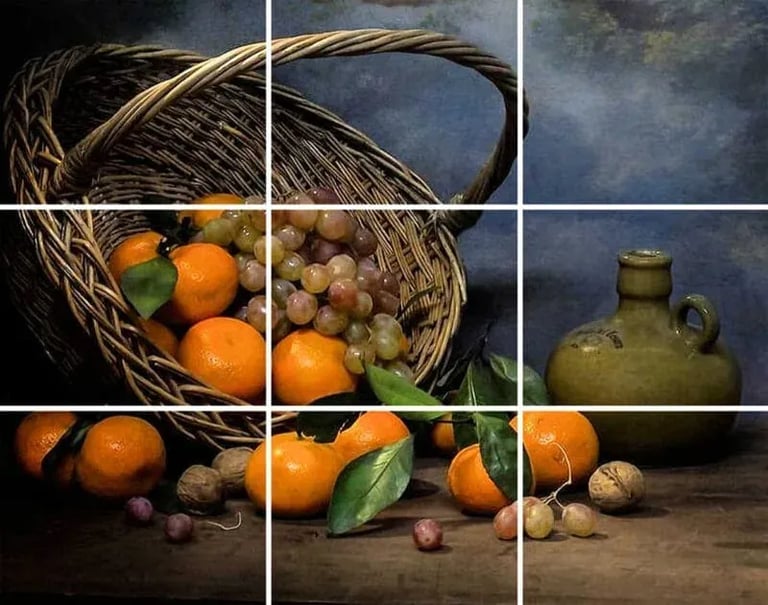Photography’s compositional magic lies in the ‘Rule of Thirds’, a fundamental principle dictating placement and balance within an image.
Abstract
This abstract explores its evolution, application, and impact across genres. Delve into techniques, critique, and the Rule’s role in storytelling, uncovering its transformative potential for photographers seeking to elevate their craft.
Introduction
The Rule of Thirds is a fundamental guideline used in visual arts, especially in photography. Imagine breaking an image into nine equal parts using two horizontal lines and two vertical lines, dividing the picture into a grid. The main idea is to position the key elements of your photo along these lines or at their intersections.
Instead of placing your subject in the center, the Rule of Thirds suggests aligning essential elements along these lines or where they intersect. It’s like a guide to create a more balanced and visually interesting composition. This technique helps draw the viewer’s attention to specific parts of the image and often makes it more engaging and dynamic. Even though it’s called a “rule,” it’s more like a guideline that can be followed or creatively broken to achieve different effects in your photos.
Historical Background and Origins
The historical origins of the Rule of Thirds trace back to ancient Greece, where artists and philosophers like Plato and Aristotle contemplated aesthetics and visual harmony. They observed that dividing a piece of artwork or a scene into balanced parts created a more visually appealing composition.
In the 18th century, the Rule of Thirds gained prominence among artists and theorists, notably through the works and writings of John Thomas Smith, an English painter and engraver. Smith discussed dividing a painting into thirds horizontally and vertically to achieve better composition. His observations emphasized the importance of avoiding the central placement of subjects and instead encouraged positioning them off-center to create more dynamic and engaging images.
As photography emerged in the 19th century, artists and photographers began to adopt this principle from painting and applied it to their photographic compositions. It became a fundamental guideline in photography, contributing to creating visually striking and balanced images.
Over time, the Rule of Thirds evolved from a guideline in traditional art to a widely accepted principle in various visual arts, including photography, cinematography, graphic design, and more. Its simplicity and effectiveness in guiding composition have made it a cornerstone for beginners learning about visual aesthetics and composition, shaping how artists and photographers approach their craft.
Importance of Composition in Photography
Composition is pivotal in photography, and the Rule of Thirds is a cornerstone. Here’s why composition matters so much in photography:
1. Visual Engagement:
- Drawing Attention: A well-composed photo captivates the viewer’s attention immediately, guiding their eyes through the image smoothly.
- Creating Interest: Effective composition elevates an ordinary scene, making it visually compelling and engaging.
2. Narrative and Storytelling:
- Enhancing Narrative: Composition helps convey stories or messages more effectively by directing focus and emphasizing key elements.
- Conveying Emotions: Proper composition can evoke emotions and convey the photographer’s intended mood or atmosphere.
3. Aesthetic Appeal:
- Balancing Elements: Good composition ensures a balance between various elements in the frame, preventing clutter or imbalance.
- Creating Harmony: It helps create aesthetically pleasing images, effortlessly guiding the viewer’s eye.
4. Guiding Focus and Emphasis:
- Directing Attention: Composition directs the viewer’s gaze to specific parts of the image, highlighting the subject or essential details.
- Emphasizing Subject: It helps highlight the main subject or focal point, making it stand out amidst the surroundings.
5. Technical Considerations:
- Optimizing Visual Impact: Composition aids in utilizing principles like framing, leading lines, and balance, optimizing the visual impact of a photograph.
- Utilizing Space: Proper use of negative space or framing within the composition adds depth and interest.
6. Creative Expression:
- Encouraging Creativity: Understanding composition allows photographers to experiment with different perspectives and create unique visuals.
- Expressing Vision: It allows photographers to translate their vision into a tangible, visually appealing form.
7. Professionalism and Refinement:
- Setting Photographers Apart: A strong sense of composition distinguishes amateurs from seasoned photographers, showcasing professionalism and expertise.
- Refining Skills: Continuous practice and applying composition principles refine a photographer’s eye for detail and aesthetics.
In essence, composition is the foundation upon which a photographer builds their visual narrative. The Rule of Thirds, as a part of this larger framework, helps photographers create compelling and balanced compositions that resonate with viewers and convey the intended message effectively.
Contact Us
At Idaho Photography Studios, we’re your one-stop destination for all your photographic needs, capturing life’s significant moments from the birth of a child to weddings, and offering services in both professional and personal realms, including personal branding.
We serve Boise, Meridian, Nampa, Caldwell, and surrounding areas in the Treasure Valley of Idaho. Count on Idaho Photography Studios as your trusted photographer to capture life’s moments. Please fill out the form below or call us at 208-760-6464.
Additional Reading
Understanding the Rule of Thirds
Mastering the Challenges of Outdoor Portrait Photography
Premier Commercial Photographer Near Boise, Idaho
